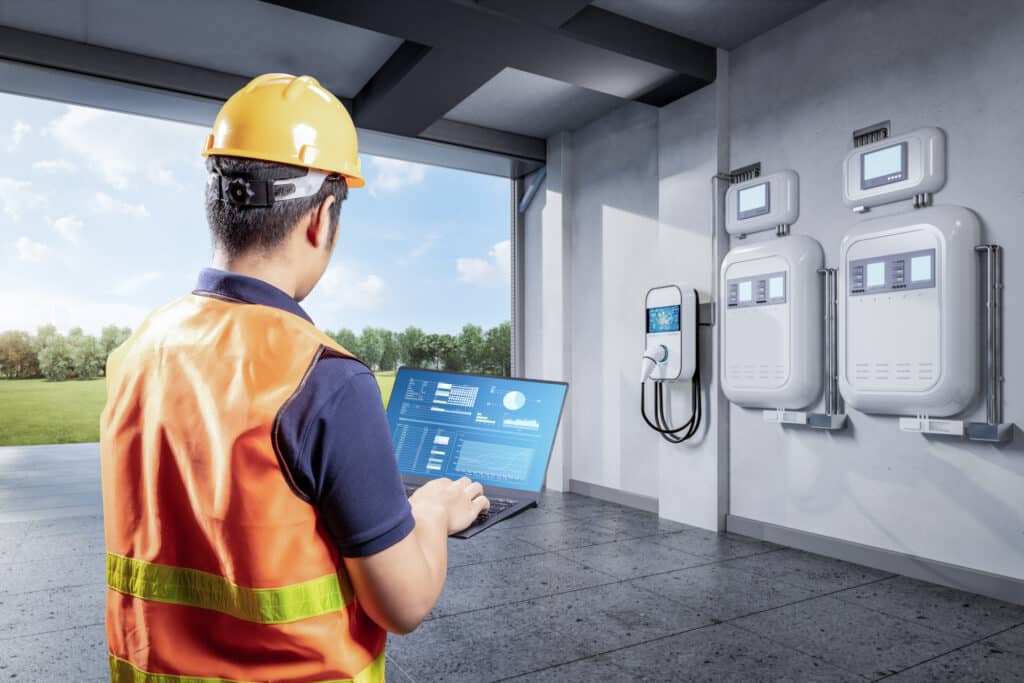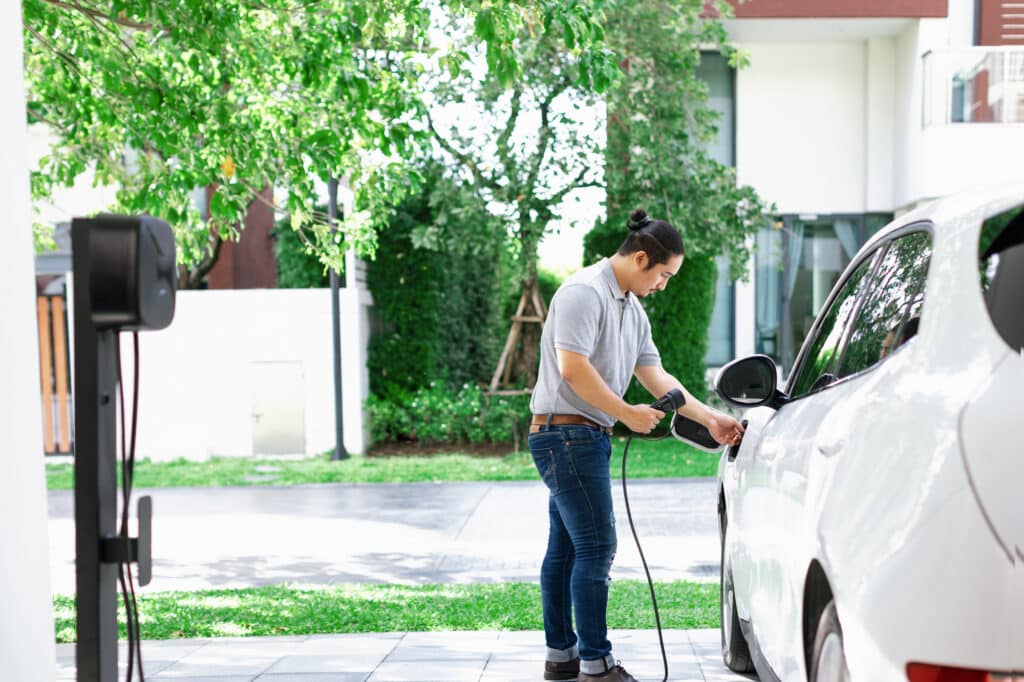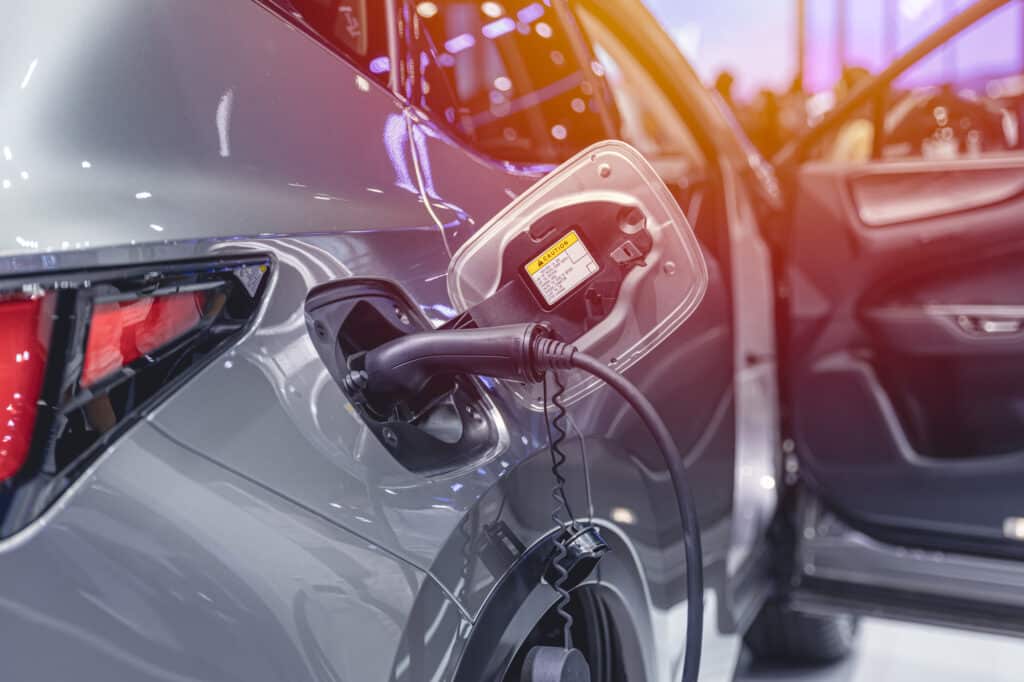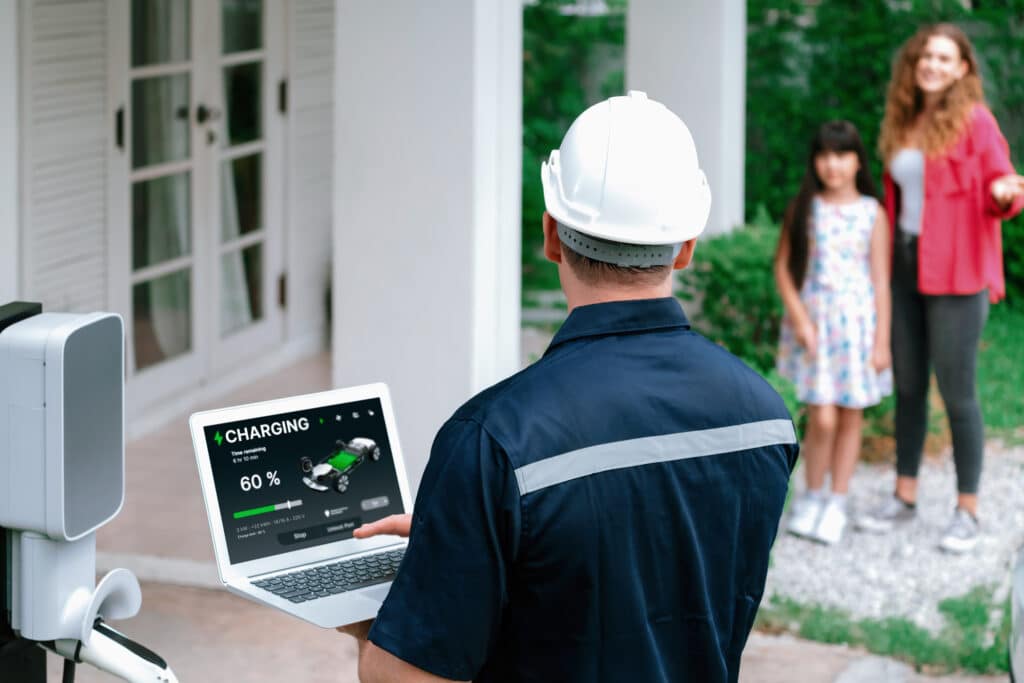Electric Vehicle (EV) Charging Installation in San Francisco
Install A Home Charging Station For Your Electric Car in The Bay Area
Are you planning to buy a new electric car soon?
At Andrade Link Electric, we’re experts in helping you switch to an Electric Vehicle (EV) in a way that’s easy, cost-effective, and totally stress-free. We understand that preparing for an EV goes beyond just the car dealership – it involves your home as well, where a perfectly planned EV charging station is the most important convenience.
If you own an electric vehicle, setting up a home charging station can be a handy and cost-saving way to ensure your vehicle is always ready to hit the road. Our team of certified electricians at Andrade Link Electric are experts in installing home EV chargers in San Francisco, and we’re here to assist you at every stage.


Home Electric Car Chargers
Electric cars are becoming more popular every day. With this rise in popularity, the need for home electric car chargers is also increasing. These devices allow you to charge your electric vehicle (EV) at home, making it convenient and cost-effective.
Types of Home Electric Car Chargers
There are two main types of home electric car chargers:
Level 1 Chargers: These chargers can be plugged into a standard household outlet. They’re easy to use but take a long time to fully charge an EV – usually around 8-20 hours.
Level 2 Chargers: These require a special 240-volt outlet, similar to what you’d use for a clothes dryer. They can charge an EV much faster than Level 1 chargers, typically in 3-8 hours.
Advantages of Home EV Charger Installation
Setting up a home charging or electric vehicle station installation comes with several benefits, such as:
Convenience:
You won’t need to go to public charging stations or wait in a long line in order to charge your vehicle.
Cost Savings:
Charging your EV at home is usually cheaper than using public charging stations, plus you might qualify for incentives and rebates.
Faster Charger Speed:
Home chargers generally offer quicker charging speeds compared to public charging stations.
Boosted Home Value:
A home charging station can raise the value of your house and make it more appealing to potential buyers.


Installation Process
Andrade Link Electric is a certified and insured electrical contractor serving the wider San Francisco Bay Area. We offer installing an electric vehicle charging stations.
Our installation procedure starts with a consultation to evaluate your home’s electrical capacity and identify the optimal spot for the charger. We’ll give you a comprehensive quote and assist you in selecting the most suitable charger for your requirements.
After you’ve chosen a charger, we’ll manage all aspects of the installation process, including securing any required permits and liaising with your utility provider. Our certified electricians will make sure your charger is installed safely and accurately, and we’ll test it to confirm it is working as it should.
FAQs
The cost to charge an electric car in San Francisco can vary based on several factors. These include the type of charging station used, the specific electric vehicle model, and the electricity rate at the time of charging.
Charging Stations: There are three main types of charging stations – Level 1, Level 2, and DC Fast Charging. Level 1 chargers use a standard household outlet and are the slowest but cheapest option. Level 2 chargers are faster and are commonly found in public places like shopping centers. DC Fast Chargers are the quickest but also the most expensive.
Electric Vehicle Model: Different electric cars have different battery sizes. A car with a larger battery will take longer to charge and therefore cost more than a car with a smaller battery.
Electricity Rates: In San Francisco, the average residential electricity rate is about 20 cents per kilowatt-hour (kWh). However, rates can be higher or lower depending on the time of day and whether you’re using a home charger or a public charging station.
To calculate the cost of charging your electric car, you would need to know the size of your car’s battery and determine the rate you’re paying for electricity. For example, if your car has a 60 kWh battery and you’re paying 20 cents per kWh, it would cost around $12 to charge your car from empty to full at home.
Remember, these are just estimates. The actual cost could be higher or lower depending on various factors. It’s always a good idea to check with your local utility company or charging station provider for the most accurate price information.
In San Francisco, there is a specific ordinance related to Electric Vehicle (EV) charging. This law is known as the “Electric Vehicle Ready” ordinance. It was established to support the city’s goal of reducing greenhouse gas emissions.
The ordinance requires that new residential, commercial, and municipal buildings be equipped with the necessary infrastructure to support the construction of EV charging stations. Specifically, it mandates that 10% of parking spaces in these new buildings must be “EV Ready”. This means they should have the electrical capacity to support future installation of EV chargers.
Moreover, additionally, for certain types of large projects, the ordinance requires that an additional 10% of parking spaces be “EV Flexible”. These spaces must have conduit and panel capacity to support EV chargers if demand increases in the future.
This ordinance is part of San Francisco’s larger effort to encourage the use of electric vehicles and reduce reliance on fossil fuels. By making it easier for people to charge their electric cars, the city hopes to promote cleaner transportation options.
San Francisco offers several incentives to encourage the use of electric vehicles (EVs) and their charging stations. Here are some of them:
Clean Vehicle Rebate Project (CVRP): This program provides rebates for Californians who choose to buy or lease new, eligible zero-emission vehicles, including electric cars.
High Occupancy Vehicle (HOV) Lane Access: Electric vehicles with a Clean Air Vehicle decal can use HOV lanes, regardless of the number of passengers in the vehicle.
Federal Tax Credit: The federal government offers a tax credit up to $7,500 on the purchase of a new electric vehicle.
PG&E Clean Fuel Rebate: Pacific Gas and Electric Company (PG&E) customers with an electric vehicle can apply for a Clean Fuel Rebate which is part of California’s Low Carbon Fuel Standard initiative.
Charging Station Incentives: San Francisco also offers incentives for installing EV charging stations at multi-unit dwellings and workplaces.
SFMTA Parking: The San Francisco Municipal Transportation Agency (SFMTA) offers free parking for electric vehicles at designated charging stations throughout the city.
Yes, installing an Electric Vehicle (EV) charging station can be profitable. However, the profitability depends on several factors:
Location: If the charging station is in a high-traffic area with many EV users, it’s likely to be used more often. This increases the potential for profit.
Pricing: The cost you charge for electricity will impact your profits. You’ll need to balance making a profit with offering competitive rates.
Costs: Installation and maintenance costs can be high. You’ll need to factor these into your calculations.
Incentives: Some governments offer incentives for installing EV charging stations. These can significantly offset your costs and increase profitability.
Demand: As more people switch to electric vehicles, the demand for charging stations will increase. This could lead to higher profits in the future.
Installing an electric vehicle (EV) charging station at home can be a great way to ensure your EV is always ready for the road. Here’s a step-by-step guide on how to do it:
Step 1: Choose the Right Charger
There are two main types of EV chargers: Level 1 and Level 2. Level 1 chargers plug into a standard household outlet, while Level 2 chargers require a dedicated 240-volt circuit. Level 2 chargers charge much faster, but they’re also more expensive and may require professional installation.
Step 2: Find a Suitable Location
The charger should be installed in a location that’s convenient for plugging in your EV. This is usually in a garage or driveway. Make sure the location has enough space for the charger and is near an electrical source.
Step 3: Hire a Professional
Unless you’re experienced with electrical work, it’s best to hire a professional to install the charger. They will ensure the installation meets the state and local governments’ building codes and safety standards.
Step 4: Install the Charger
The professional will install the charger by connecting it to your home’s electrical system. If you’re installing a Level 2 charger, they may need to install a new circuit breaker in connection to your electrical panel.
Step 5: Test the Charger
Once the charger is installed, test it to make sure it’s working properly. Plug in your EV and check that it starts charging.
Remember, safety should always be your top priority when dealing with electricity. Always follow the manufacturer’s instructions and consult with a professional if you’re unsure about anything.
Starting an Electric Vehicle (EV) charging station installation business can be a great opportunity, especially as the demand for electric cars is on the rise. Here’s a step-by-step guide to help you get started:
1. Understand the Market
Before starting any business, it’s crucial to understand the market. Research about the EV industry and its growth potential. Look at the number of electric vehicles in your area and the availability of charging stations. This will give you an idea about the demand for your services.
2. Create a Business Plan
A well-thought-out business plan is essential for any new venture. It should include details about your target market, competition, pricing strategy, marketing plan, and financial data and projections.
3. Get Required Training and Certification
Installing EV charging stations requires technical knowledge. Therefore, getting proper training is important. There are several organizations that offer certification programs for EV charging station installers.
4. Register Your Business
Register your business with the appropriate government agency. You’ll need to decide on a business structure (like sole proprietorship, partnership, or corporation), choose a business name, and apply for an Employer Identification Number (EIN).
5. Obtain Necessary Permits and Licenses
You may need specific permits and licenses to install EV charging stations. The permit requirements vary by location, so check with your local government office.
6. Purchase Equipment
You’ll need to buy the necessary equipment for installing charging stations. This includes the charging units themselves, as well as tools for installation.
7. Market Your Services
Once everything is set up, start marketing your services. You can use social media, local newspapers, or even word-of-mouth to spread the word about your new business.
The time it takes to install an electric car charging station can vary. It depends on several factors, such as the type of charger, the location of installation, and the electrical capacity of your home.
If you’re installing a basic Level 1 charger, which uses a standard household outlet, the process could be as simple as plugging it in. This doesn’t require any special installation.
However, if you’re installing a faster Level 2 charger, you might need a professional electrician. They will need to assess your home’s electrical system and possibly upgrade it. This process could take anywhere from a few hours to a full day.
Remember, every situation is unique. Always consult with a professional to get an accurate estimate for your specific needs.
